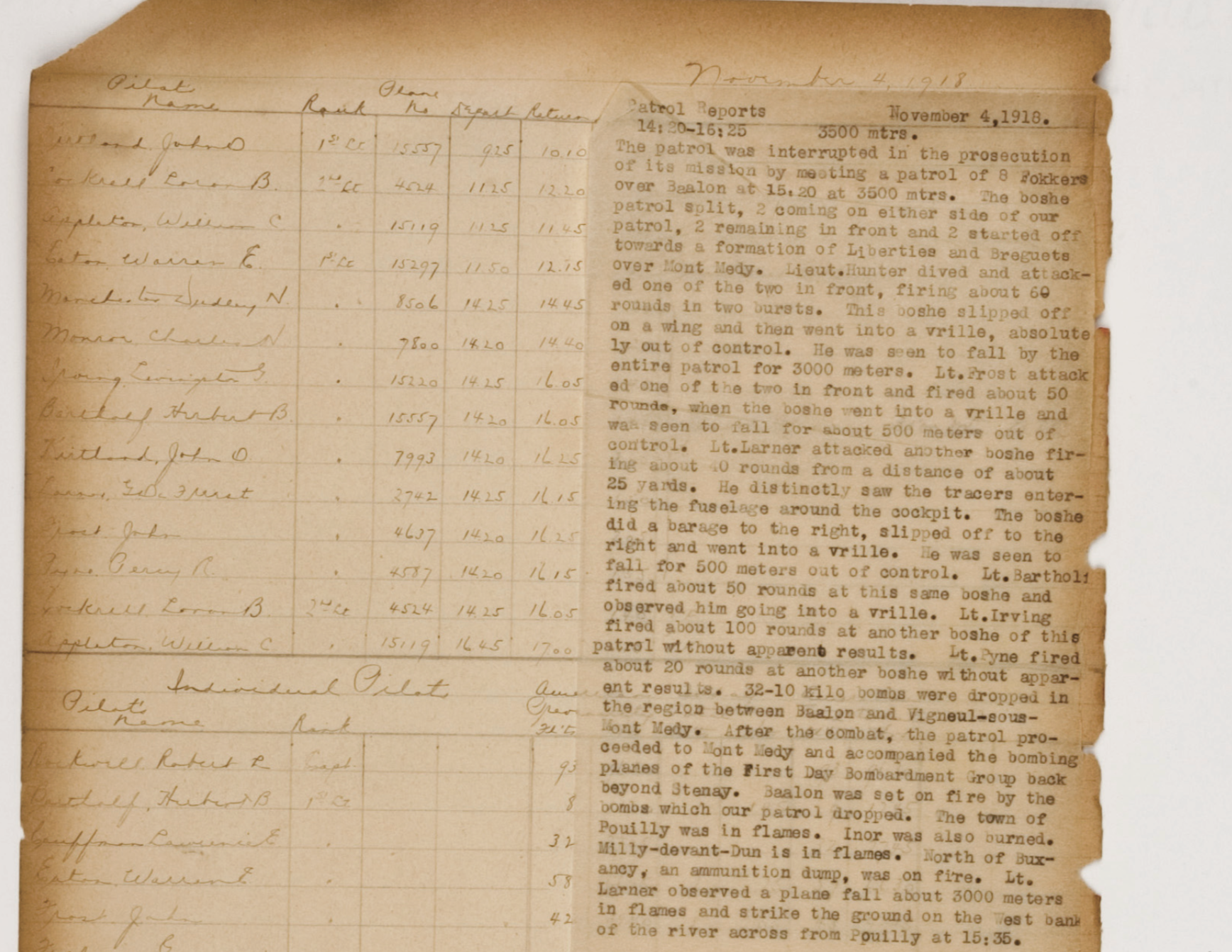As 1918 began, things were looking up for the Germans, even though the United States had joined the Allies. In March, the Russians surrendered, freeing up German forces from the Eastern Front to partake in the "Spring Offensive," which had initial success in breaking the stalemate that had encompassed the West for so long. Although the Germans had developed new fighters, they had not been deployed in large enough numbers to make a difference in air combat during of the offensive. The Spring Offensive soon ran out of gas and the lines stagnated.

New, improved aircraft like the Fokker D.VII never made it into combat in significant enough number to turn the tide of combat in the air.

As with the D.VII the LFG Roland D.VI arrived too late in the war to make a significant difference. Additionally, the Germans endured many fuel and supplies shortages that made it hard to keep the aircraft operational.
In 1918, the English created the Royal Air Force as an independent service. The RAF was the largest air force in the world, which ensured that the British would maintain air superiority until the end of the war.

In addition to fighters, the RAF utilized bombers like the Handley Page 0/400 which occasionally caused significant damage to the enemy during bombing raids.
It was in 1918 that American squadrons first saw action. At first they were equipped with surplus aircraft that the French did not want to use. This, in addition to the fact that the American pilot's had much less experience than their adversaries, put them at a distinct disadvantage.

Many American squadrons were originally equipped with the Nieuport 28, a French aircraft that was not a favorite of the French. The San Diego Air & Space Museum has an original Nieuport 28 painted in the colors of the famous 94th Aero Squadron, "The Hat in the Ring."


When. the Lafayette Escadrille was disbanded, many of its pilots joined the 103rd Squadron. The San Diego Air and Space Museum has the diary of patrols and other activities from the 103rd dated February 19, 1918 to March 19, 1919. This page is from November 4th, 1918, a week before the armistice.

SDASM also posses a log book from the103rd dated from June 1, 1918 to December 15, 1918 and contains notes, flights, and kills. This page from March of 1918 contains great detail.
Soon the Americans were equipped with newer aircraft, such as the Spad XIII. This put the Americans on equal footing with the Germans by the end of the war.

An illustration showing pilot C.R. D'Olive shooting down a Fokker VII while flying a Spad XIII. Signed by both C.R. D'Olive and Eddie Rickenbacker, this print is one of the treasures in the Museum's curatorial collection.
By the Fall of 1918, the war had taken its toll on the Central Powers and Germany in particular. The Allies strategy of blockading had made supplies needed to wage war scarce. This, in addition to the fact that the Americans had joined the fight, led the German government to call for an end to the war, and an armistice went into affect on November 11, 1918.
2001 Pan American Plaza, San Diego, CA
Phone: 619.234.8291
Información En Español
Contact Us
We would like to thank all our sponsors who help us make a difference. Click here to view all who help us.

The San Diego Air & Space Museum is a 501(c)(3) non-profit organization. Federal Tax ID Number 95-2253027.